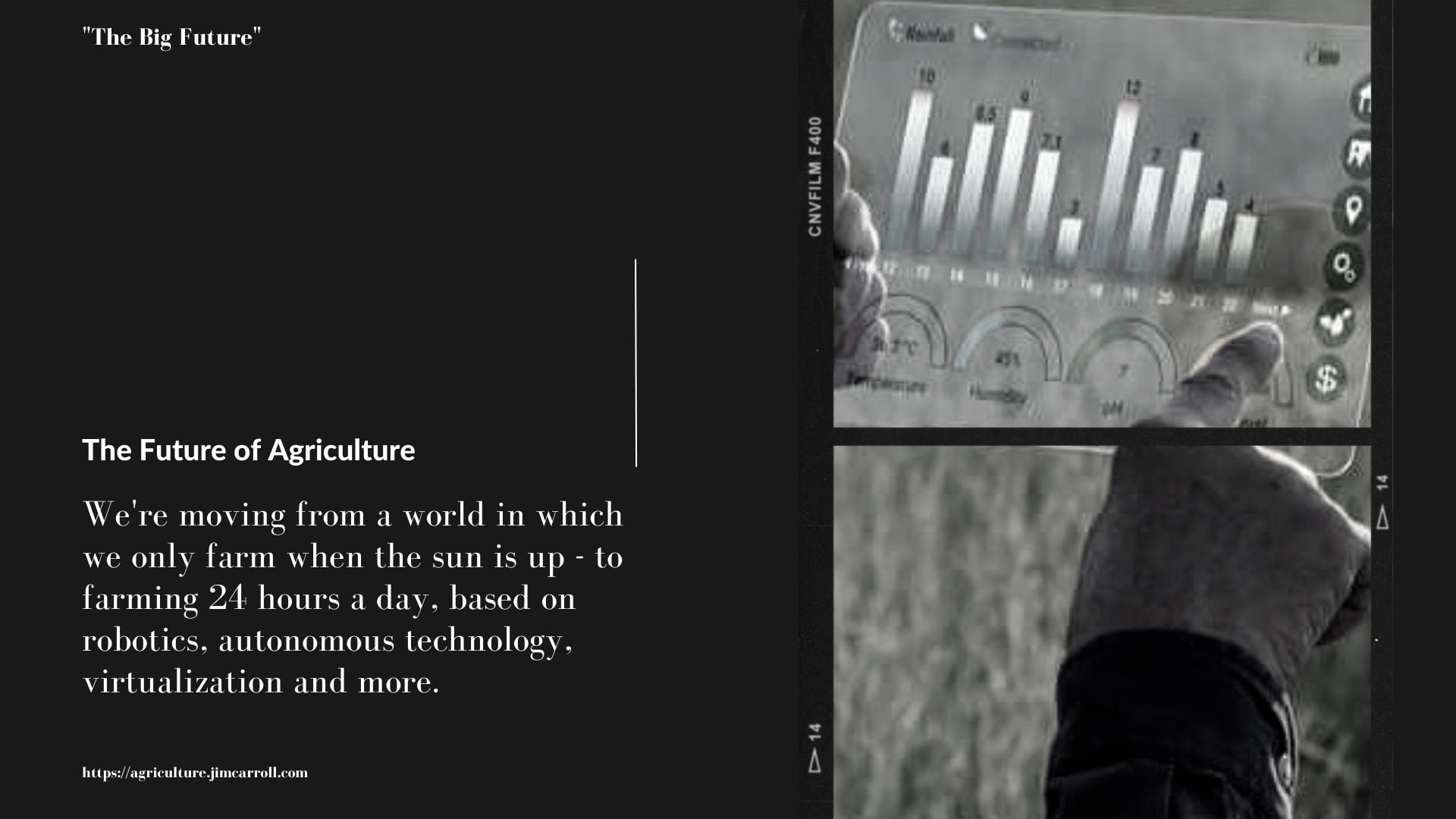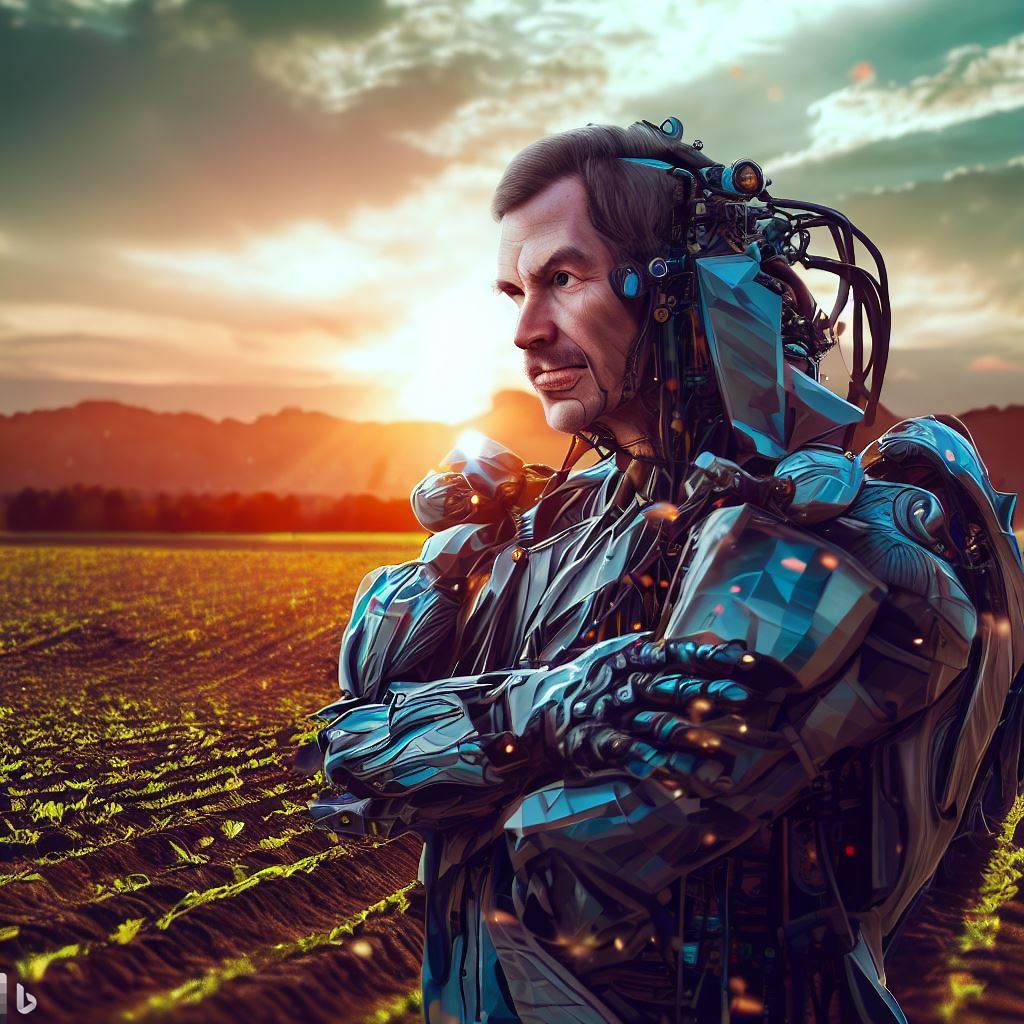“The thing about a big future is that it often turns out to be even bigger than you think!” – Futurist Jim Carroll

Welcome to 2023! It’s the year of all AI, all the time!
Not a day goes by that you don’t run across dozens of articles, literally hundreds of social media posts, and all kinds of opinions about what is happening. One thing is clear – everyone agrees this is both exhilarating and terrifying. Economist Magazine, just now, wisely captured this sentiment on its’ cover.

It’s also a bit of fun for people who have been speaking and covering AI for many years to suddenly see all the newly-forged experts around. It seems anyone who has run a few ChatGPT interactions suddenly has a clear view of the future!
That’s why I’ve started to go “Beyond ChatGPT” with my clients and my insight, digging deep on an industry by industry basis of how AI – multiple different use cases, technologies and algorithmic methodologies – have already been transforming entire industries, and will continue to do so. It’s when you are focused on the current BIG future – ChatGPT and such – that you lose sight of an even bigger future.
What’s that bigger future? Al has been transforming entire industries for quite some time – and has now entered what I call ‘the era of acceleration.” That’s when multiple trends come together, coalesce, and speed up what was already fast. In that context, and given what is now unfolding with ChatGPT and image/video generation AI, you need to be thinking about the BIGGER future. This is not just about ChatGPT and other exciting stuff – there already is SO MUCH MORE already going on!

That’s why earlier this week, I decided to dive into this with my AI Megatrends series, “Beyod ChatGPT: The Big AI Trends Transforming Industries.” You’ll find it over at ai-megatrends.jimcarroll.com – as new items are posted on my blog for the series, they’ll also be updated there. This is in addition to my BIG Future series which I’m also currently running – that’s at bigfuture.jimcarroll.com! (My mind is on fire these days!) I’ve decided that since I’ve long been keeping a careful eye on the evolution of AI in all the industries I speak in – it’s been used in various ways for quite some time – I should take my clients further into the future.
Here’s a glimpse of what you need to be thinking about. Consider what is happening in healthcare, where AI-based disruption has already been underway for quite some time:
At Mayo Clinic’s cardiology department, doctors use an artificial-intelligence program to help detect new heart problems. Elsewhere, a group of primary-care doctors is using it to help identify an eye condition that can lead to blindness. A number of hospitals are using it to catch patients at risk for sepsis.
Your Health: Doctors Tap AI to Augment Diagnostics — Artificial intelligence can help spot conditions that are brewing, accelerating treatment
1 March 2023 The Wall Street Journal
What’s going on with AI in healthcare, the medical sciences, and pharma? We have doctors detecting and diagnosing irregular heart rhythms known as atrial fibrillation, potentially years before they might otherwise have been detected, interpreting signals that are so subtle that humans might not be able to detect them. We are using specialized cameras to examine eyes, combined with AI to detect diabetic retinopathy, which is a leading cause of blindness. We are developing specialized optical technologies that can read physiological data and detect – visually, without body contact – vital signs such as body temperature, pulse, blood pressure, fatigue, and even drug and alcohol use in seconds.
We are identifying fake and counterfeit drugs through the examination of specialized chemicals and other markers with AI analysis. We are using AI to improve the accuracy of polyp detection in colonoscopy screening. Then there is what we can call “sophisticated molecular surveillance“—for example, turning cell phones into what some experts call “smell phones” capable of spotting particular medical conditions. Emergency rooms? We’re using AI to help identify and treat patients most at risk in ERs and ICUs: it’s become a sort of early warning system to alert staff to significant but subtle changes in patients that might not be otherwise noticed. We can even use AI to select organs for donor transplant with a greater potential for success of the outcome.
Or consider agriculture, the second article in my mega-series. Whether it’s driverless tractors, weed-zapping robots, or data-transmitting crops, the future of farming is happening faster than you might think! We’re rapidly transitioning into a world of 24-hour farming, no longer restricted to farming only when the sun is up! This is one of the big issues and big ideas that I’ve been putting across in my BIG Future series. AI is playing a huge role in this transition – it gives insight into autonomy.

And so while many people continue to view farming from the sepia-toned photos of the 1940s and 1950s, they don’t realize the technological and scientific advances that have already been underway – and which AI has already been playing a role. Where does this take us? Maybe to a future of farming involving this guy!

As we add AI into our fertile mix of farming innovation, suddenly, a fast-moving industry is moving into hyperdrive. Beyond the hype and excitement of ChatGPT and text-to-image generation, we are seeing an acceleration in:
- Precision agriculture: PA has been with us for close to 30-40 years as a concept; slowly moving at first, it has finally picked up significant speed in the last decade. AI moves it forward as it takes on the role to analyze data from sensors and drones to create precise maps of crops, allowing farmers to optimize irrigation, fertilizer, and pesticide use.
- Crop prediction: Predictive analytics is a huge reality and necessity in ag. AI can analyze data on weather patterns, soil quality, and historical yield data to predict crop yields and help farmers plan their harvests.
- Plant disease detection: We can fly a drone over a crop and gather very discrete information at a very detailed level – AI can then be used to analyze these images of crops and detect signs of disease or pests, allowing farmers to take action before the problem spreads.
- Livestock monitoring: For lack of a better phrase, we are in the era of ‘fitbits for cows.’ AI-powered sensors can monitor livestock for health and welfare, allowing farmers to identify and address potential problems before they become serious.
- Harvesting optimization: Farming is all about intelligent decision-making – not just with things like planning and the weather, but the key question: when do we harvest? AI can analyze data on soil moisture and crop ripeness to optimize the timing of harvesting, reducing waste and improving yields.
- Irrigation optimization: Water is our most precious resource, and in an era of increasing scarcity, everyone is scrambling for solutions on how to best manage it. AI can analyze data on soil moisture and weather patterns to optimize irrigation, reducing water waste and improving crop yields.
Construction? As in many other industries, the construction sector has already been on a path to digitization with the acceleration of technology. Computer-aided design (CAD) and building information modeling (BIM) concepts have accelerated the design and build process, but these have been but baby steps in a complex voyage. AI has been moving this forward at speed – it is already taking us into a world in which we can apply automated, intelligent routines in the many calculations, assumptions, testing, and analysis of the ideas we are using in the architecture and design process, as well as detailing the methodologies that will be used to put those designs into actionable steps. Layer into the mix of AI-driven digital-twin technologies and a revolution is at hand.
Or consider what we have been doing with efforts involving the digitization of the project management (PM) process. We need to carefully manage the ordering and procurement, fabrication and assembly of millions of individual components, and manage extremely complex projects in construction What if we could automate some of this, kick out the exceptions for analysis, and ignore the rest? Some companies are doing this, by working with Ian AI system to explore how to take existing digitized projects and analyze the data within for insight on rising costs, schedule delays, supply chain problems, or errors in estimates, forecasts, and project risks. Consider it BIM on steroids!
Then there is the acceleration of robotic methodologies in construction. It’s when we marry AI concepts with robotics that things become really interesting in the construction sector. Robotics is already making its way felt in the sector in a very significant way. We have been busy automating the building process itself. Certainly, the entire process of the automation of the construction process has been moving quickly within the residential sector. The UK-based Legal & General, for instance, has been aggressively working to disrupt the business of home construction through the ability to manufacture homes on high-tech production lines that when completed, are ready to live in, with carpets, curtains, and white goods already in place. What they are really doing is disrupting the concept of construction by moving away from building in sites with blocks, to building utilizing robots in factories with subsequent assembly on site.
This isn’t just ‘pre-fab’; it’s the arrival of disruptive methodologies – and AI is at the heart of this.
What’s the point of all this? ChatGPT etc is here; it’s disruptive, transformative, and massive! But it’s not the only AI thing – it’s but one thing among many. In the next few weeks, I’ll be covering insurance, banking, manufacturing, retail, education, energy, and even retail. Oh, and golf! Because next week, golf season starts up for me, and for a time, an AI has already been analyzing the big data generated by my hyperconnected golf clubs:

Here’s what you need to know today: The future is even bigger than you think – and so if you are caught up on the current shiny new object, you are too busy caught in the glare to notice the bigger picture!
Follow my series. AI-megatrends.jimcarroll.com




GET IN TOUCH
Jim's Facebook page
You'll find Jim's latest videos on Youtube
Mastodon. What's on Jim's mind? Check his feed!
LinkedIn - reach out to Jim for a professional connection!
Flickr! Get inspired! A massive archive of all of Jim's daily inspirational quotes!
Instagram - the home for Jim's motivational mind!